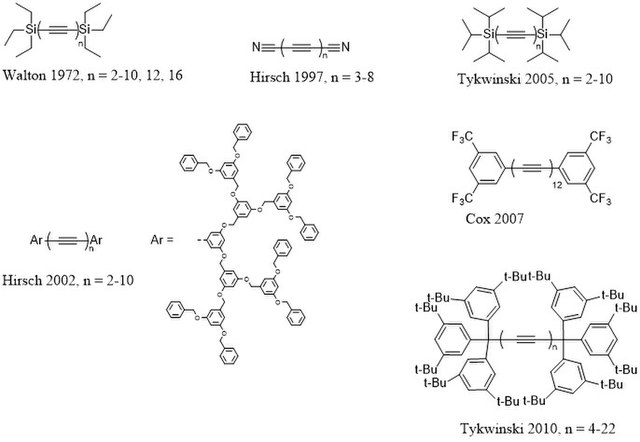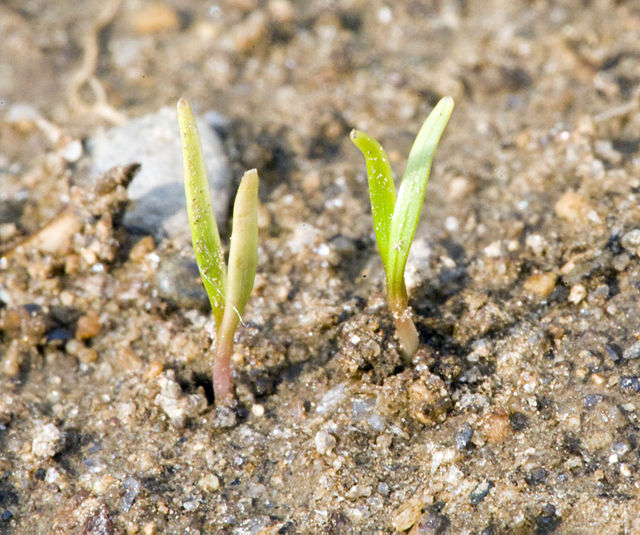A polyyne is any organic compound with alternating single and triple bonds; that is, a series of consecutive alkynes, (−C≡C−)n with n greater than 1. These compounds are also called polyacetylenes, especially in the natural products and chemical ecology literature, even though this nomenclature more properly refers to acetylene polymers composed of alternating single and double bonds (−CR=CR′−)n with n greater than 1. They are also sometimes referred to as oligoynes, or carbinoids after "carbyne" (−C≡C−)∞, the hypothetical allotrope of carbon that would be the ultimate member of the series. The synthesis of this substance has been claimed several times since the 1960s, but those reports have been disputed. Indeed, the substances identified as short chains of "carbyne" in many early organic synthesis attempts would be called polyynes today.
Organic and organosilicon polyynes
Examples of known organometallic polyynes.
The carrot is a root vegetable, typically orange in color, though heirloom variants including purple, black, red, white, and yellow cultivars exist, all of which are domesticated forms of the wild carrot, Daucus carota, native to Europe and Southwestern Asia. The plant probably originated in Persia and was originally cultivated for its leaves and seeds. The most commonly eaten part of the plant is the taproot, although the stems and leaves are also eaten. The domestic carrot has been selectively bred for its enlarged, more palatable, less woody-textured taproot.
Carrot
A depiction labeled "garden" carrot from the Juliana Anicia Codex, a 6th-century AD Constantinopolitan copy of Dioscorides' 1st-century Greek pharmacopoeia. The facing page states that "the root can be cooked and eaten."
Seedlings shortly after germination
Daucus carota umbel (inflorescence). Individual flowers are borne on undivided pedicels originating from a common node.






